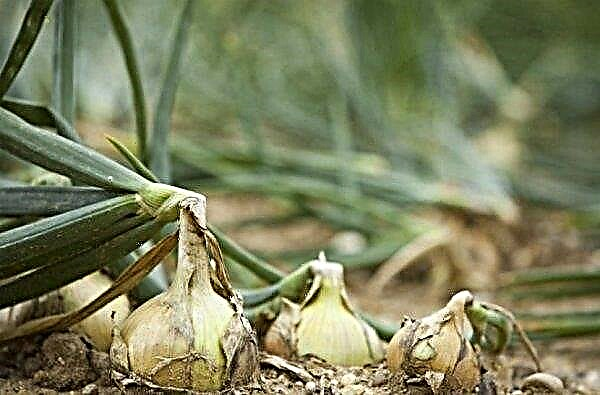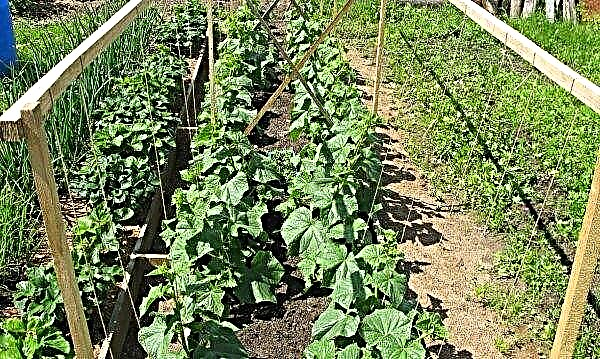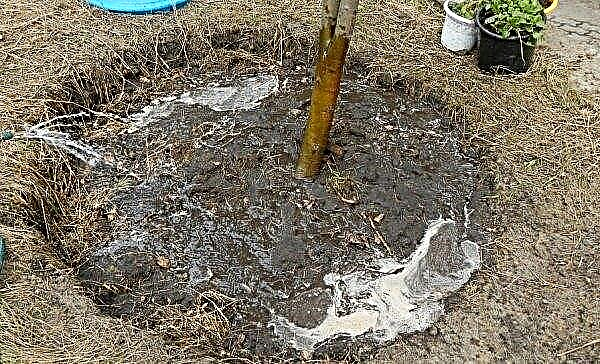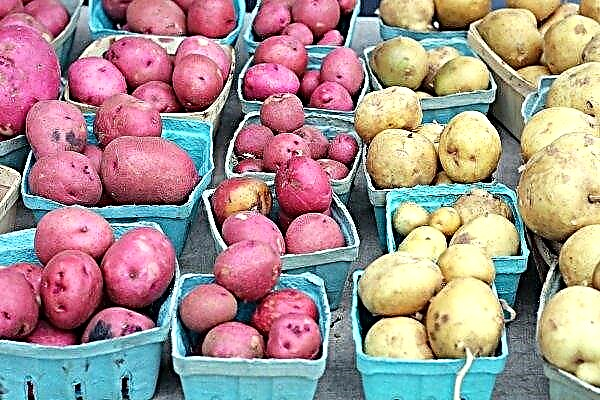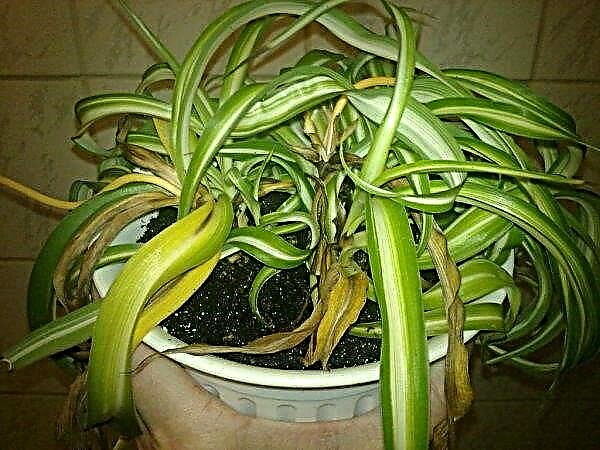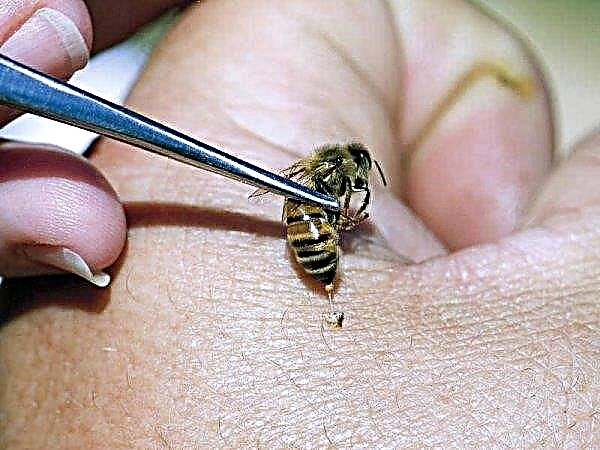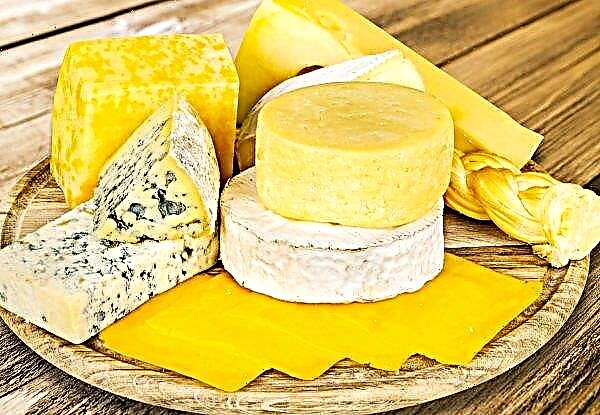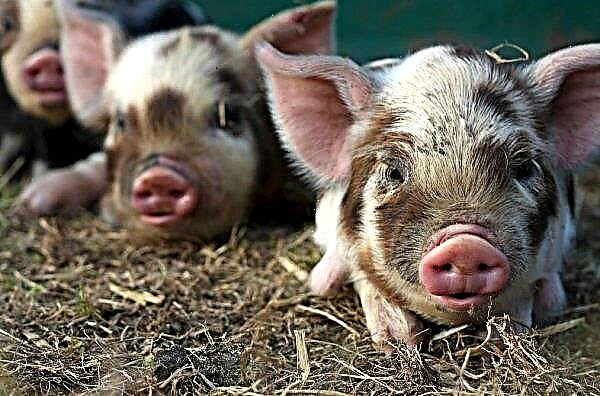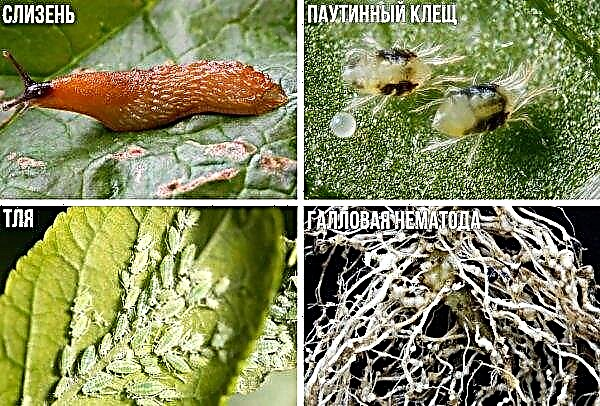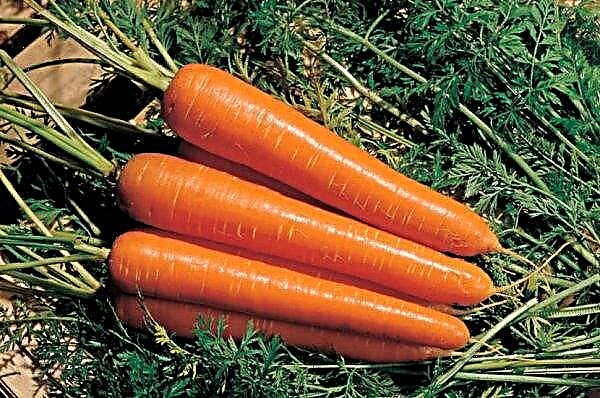Aport apple trees bear large bright red fruits and are considered one of the well-known garden crops that grow everywhere. The reason for their wide distribution is unpretentiousness and good yields of large apples. In the article, we offer to learn more about the nuances of the agricultural technology of these fruit trees.
The history of selection of varieties Aport
Breeders have several versions about the appearance and distribution of Aport apple trees:
- Already in the XII century, the culture was grown by the inhabitants who inhabited modern Ukrainian lands.
- Ottoman Turks imported apple trees into Poland similar to Aport apple trees according to the variety description (church diaries for the 1170s mention this).
- Since the XVIII century, similar varieties were widely cultivated in English, French, Belgian and German gardens and had different names.
- Since 1865, the described apple tree began to take root in the Kazakh expanses, where Almaty breeders combined the genomes of local wild cultures with the Aport apple tree and received large-fruited hybrids Almaty Aport and Vernensky.
- Today, clones of this variety are widely found in the southern regions and central Russia, where the apple tree is grown mainly in the greenhouse environment.
Did you know? Recent genetic studies conducted in 2000 by pomologists from the United Kingdom established the pioneer of the modern apple variety Aport, the wild Sivers apple tree, which grows in the foothills of Kazakhstan and Central Asia.
Characterization and description of the variety
The apple tree belongs to the late autumn variety.
Description of the tree and fruits
According to botanical characteristics, the hybrid has the following features:
- grows to 6 m;
- different round and spreading crown with a diameter of 10-12 m;
- characterized by strong and elongated brown shoots of medium thickness;
- has a rounded, dark green foliage with a somewhat pubescent edge;
- blooms with a delicate, white, fragrant color that completely covers the tree;
- fruiting occurs from the 4th year of life;
- large-sized fruits, there are weakly pronounced ribs, flattened-conical appearance;
- on apples, a dense and rough yellow-green peel with a spilled carmine hue, there is a wax coating;
- sweet and sour apples to taste, with juicy pulp of a white-green hue;
- fruits have an average weight of 200 g;
- Differs in high productivity: each plant with good care can produce up to 150 kg of apples.
 The palatability of apples and their appearance more than once deserved the highest tasting score at various exhibitions and forums. For this combination, Aport apples are called souvenir.
The palatability of apples and their appearance more than once deserved the highest tasting score at various exhibitions and forums. For this combination, Aport apples are called souvenir.Timing of flowering and ripening
The flowering time of the described apple trees will depend on the region of growth and temperature conditions in spring. In the southern regions, at established plus temperatures, flowering occurs in early May. In other zones, budding can be delayed for a week, passing from region to region and reaching even June. Aport is considered a late hybrid: apples ripen from the last decade of September to the first week of October.
Important! Aport trees need to be close to pollinating varieties, as this guarantees trees abundant harvests. If the cultivation of the crop occurs without pollination, the formation of ovaries on the trees will significantly decrease, or even barren years may be recorded.
The main varieties serving as pollinators for Aport:
- Prikubansky;
- Shield;
- The memory of Esaul.
 Looking at these beauties, it is easy to understand why in the Almaty region they are trying with all their might to support the greatness of Aport.
Looking at these beauties, it is easy to understand why in the Almaty region they are trying with all their might to support the greatness of Aport.Resistance to diseases and pests
The variety is characterized by medium resistance to parasites and diseases, therefore, with insufficient care, trees can have health problems.
Did you know? Since ancient times, apples in Europe have been considered the most famous and common fruits, so in the Middle Ages they were a measure of other fruits: when merchants brought overseas fruits and vegetables, they were given the corresponding names - “golden apple” (tomato), “bloody apple” (potato), “ Chinese apple "(orange)," Native American apple "(lemon).
Frost resistance
Aport hardly tolerates a sharp onset of frost and wintering in general. Trees can tolerate harsh winters if they are grown on stocks resistant to cold varieties, or hybrids with increased vitality are used. If in the conditions of the southern regions of Russia Aport perfectly experiences winter, then in the middle zone in the zone of temperate climate some problems already arise.
If in the conditions of the southern regions of Russia Aport perfectly experiences winter, then in the middle zone in the zone of temperate climate some problems already arise.
Pros and cons of the apple tree
- The advantages of this variety are: ]
- excellent commercial quality of fruits;
- large-sized apples;
- high yields;
- good transportability of fruit products;
- excellent fruit taste.
- The disadvantages of the apple tree:
- short storage of fruits;
- low cold resistance of trees;
- low scab resistance;
- irregular productivity.
Varieties of Aport
The apple tree in question has varietal clones that have similar characteristics to it.
We recommend that you familiarize yourself with the winter varieties of apple trees:
Alexander
This is a varietal clone with almost complete similarity of characteristics with the classic Aport. The only difference is a more pronounced striped-mottled color and a more intense yellowness of the inner part.
Blood red
This variety is also almost identical to the classic, although it has some external difference:
- the fruits are completely covered with an even color of a red-bloody blush, have a medium-grained cream core with a spicy aftertaste;
- the presence of a four-year cycle of fruiting - in the season with rich fruiting, all fruit buds are cut out on apple trees so that the tree can rest in the first year, bring a small fruit harvest (20-30 apples) in the next year, give up to 60 kg of fruit for the 3rd season, 4 the fruiting will become the most plentiful, and then the cycle will repeat.

Almaty
In appearance, the Almaty variety has a similarity with Blood-red, but more whimsical. It is believed that the clone displays its best qualities during mountain cultivation at an altitude of up to 1200 m above sea level. When planted at lower levels, its apples ripen, and at a higher altitude it will be less sweet. This varietal variety has the largest fruits - up to 900 g, which retain excellent taste almost by the beginning of summer (about 8 months).
When planted at lower levels, its apples ripen, and at a higher altitude it will be less sweet. This varietal variety has the largest fruits - up to 900 g, which retain excellent taste almost by the beginning of summer (about 8 months).
Did you know? The Kazakhs are very proud of the Aport Almaty hybrid they have produced, so some Kazakh postage stamps and commemorative silver coins have an image of the fruits of this apple tree.
Landing and care
Properly selected seedlings contribute to the future health and strength of the tree.
How to choose seedlings for planting
When buying planting material, you should pay attention to the condition of the seedlings:
- the root system of trees should be well developed, up to 30 cm long and branch well;
- if the roots are sluggish and dry, this indicates poor storage conditions of the plant, which does not contribute to its survival;
- you need to pay attention to how the roots are protected: left exposed without shading, are in a humid environment or placed in the ground (which is more preferable);
- in the context, the roots should be white (which indicates their health and survival), as well as without any growths, swelling and unevenness;
- seedlings should be straight and straight, without wounds or other damage, the wood under the bark should have a bright green color;
- young trees should be grafted in a quality manner (the branches should not be located at right angles to the trunks and have spikes, and also the main shoots should not grow directly from the stocks);
- the age of the seedlings should not exceed 2 years.

Dates for boarding
Since the culture belongs to the winter variety, autumn planting is necessary for its better survival.
Important! Do not buy seedlings with blossoming leaves, especially in the spontaneous market - when planting such trees are often sick and may not even take root. It is better to buy specimens with buds that have not yet opened up - they are offered for sale by special nurseries: here trees are sold that are grafted according to all the rules and passed sanitary control.
Ways to choose and prepare a landing site
Choosing and preparing a place for planting apple trees, are guided by the following rules:
- The landing area should be well-lit, without drafts, especially in winter.
- It is best suited for landing drained loam.
- It should not be in the area of close occurrence of groundwater (less than 1 m). Excess moisture is discharged into special recesses dug near the trees.
- Soil for a landing pit is prepared from compost and peat.
- Nutritious pits are prepared a week before disembarkation, so that the mixture has time to settle.
Video: instructions for planting an apple tree
Watering and fertilizing rate
Apple tree seedlings need systematic hydration. When planting, the trees are abundantly moisturized by pouring water into the trunk circle until the liquid is no longer absorbed. To prevent moisture from evaporating quickly (especially in the hot season), the trunk circle must be mulched with humus or peat. This procedure will also maintain nutrient levels in the soil. Watering is necessary along the perimeter of the trunk circle, and not under the trunk, since it is there that the suction parts of the roots are located.In the process of growth, young apple trees need mineral fertilizers (ammonium sulfate, potassium sulfate) and nitrogen-containing fertilizing (urea, ammonium nitrate). These drugs are introduced in spring and autumn. The first drugs will strengthen the vegetation of the trees, and the second will saturate them with a set of substances necessary for survival in the long cold period. Nitrogen feeding is used only in the spring.
Watering is necessary along the perimeter of the trunk circle, and not under the trunk, since it is there that the suction parts of the roots are located.In the process of growth, young apple trees need mineral fertilizers (ammonium sulfate, potassium sulfate) and nitrogen-containing fertilizing (urea, ammonium nitrate). These drugs are introduced in spring and autumn. The first drugs will strengthen the vegetation of the trees, and the second will saturate them with a set of substances necessary for survival in the long cold period. Nitrogen feeding is used only in the spring.
Video: feeding apple trees
Branch pruning and crown shaping
For stable yields and good crown growth, apple trees need to be regularly formed:
- pruning is carried out for the first time immediately after planting young trees;
- during the first pruning, side shoots are cut, and trunks are cut to 80 cm, which will increase plant growth;
- spend annual thinning of the crown, not allowing it to thicken.
 Caring for the Aport is facilitated by the fact that its crown is usually quite sparse and does not need strong pruning.
Caring for the Aport is facilitated by the fact that its crown is usually quite sparse and does not need strong pruning.Pest and Disease Control
The following problems are detrimental to the growth and development of culture:
- Tinder fungus. It is necessary to regularly clean the trunk of the mushroom, and the place where it struck the tree should be treated with copper sulfate and then with oil paint. These manipulations will also serve to prevent the appearance of other pests and infections.
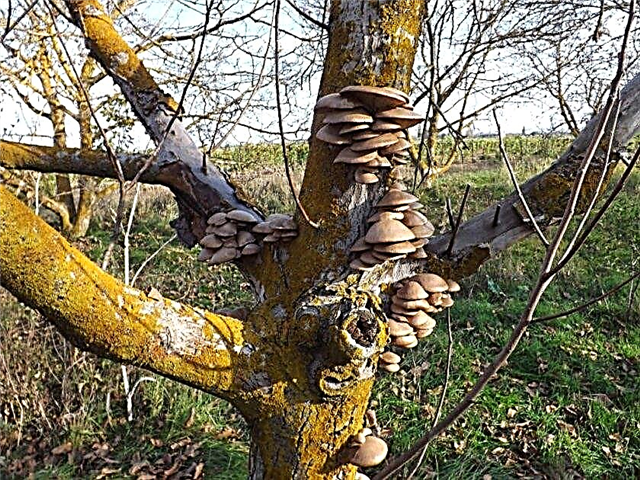 Tinder funnel sucks nutrients from the apple tree every day, and it is better and easier to get rid of it at an early stage.
Tinder funnel sucks nutrients from the apple tree every day, and it is better and easier to get rid of it at an early stage. - Scab. Against the disease, Gamair, Hom, Bordeaux mixture, and Rayok are used. Preventive treatment is carried out using a solution consisting of 10 l of water + 700 g of urea + 50 g of copper sulfate.
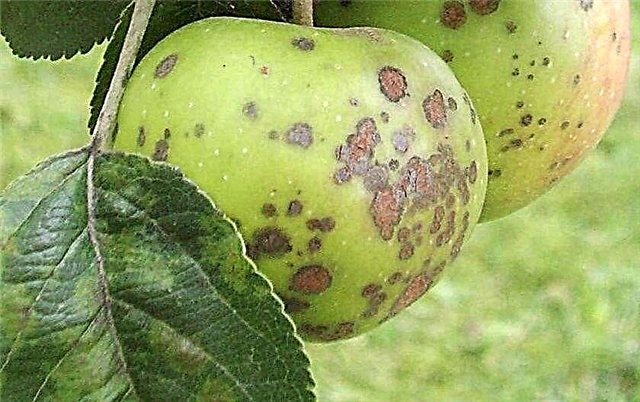 The scab is easily recognized by the characteristic spots on the fruits and leaves.
The scab is easily recognized by the characteristic spots on the fruits and leaves. - Aphids are green and codling moth. To destroy parasites, trees are treated with "Entobacterin", "Karbofos", "Chlorophos".
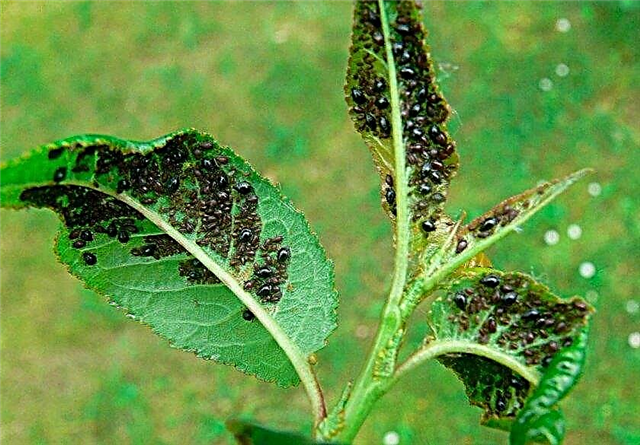
Harvesting and storage
Apples are harvested from trees in October. The fruits taken from apple trees are stored for up to 3 months in cellars. Long periods are sometimes possible, but in this case, the fruits can quickly begin to deteriorate during long-term storage: their taste qualities deteriorate, and the texture of the inside becomes loose and loses flavor.
Growing an apple tree of the Aport variety and observing the correct agricultural technology algorithm, it is possible to achieve its long-term fruiting. Although this varietal variety does not differ in stable crops and winter hardiness, its large, beautiful and tasty fruits will become worthy compensation for the efforts made.

 Tinder funnel sucks nutrients from the apple tree every day, and it is better and easier to get rid of it at an early stage.
Tinder funnel sucks nutrients from the apple tree every day, and it is better and easier to get rid of it at an early stage. The scab is easily recognized by the characteristic spots on the fruits and leaves.
The scab is easily recognized by the characteristic spots on the fruits and leaves.
